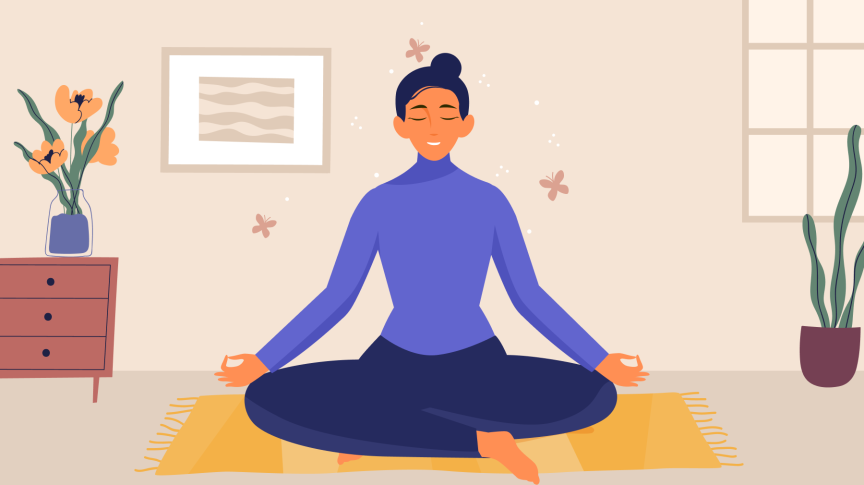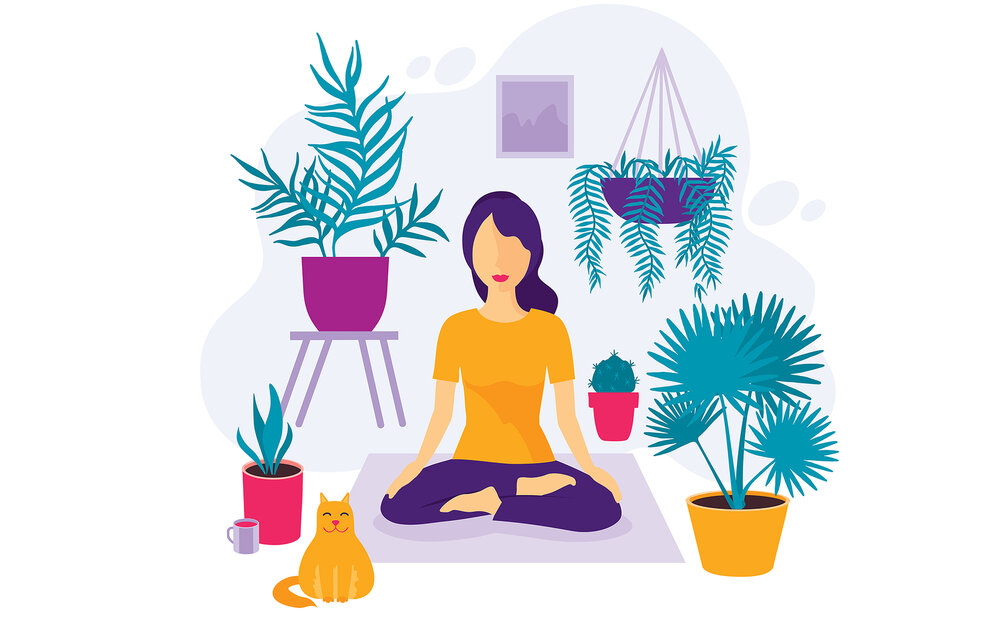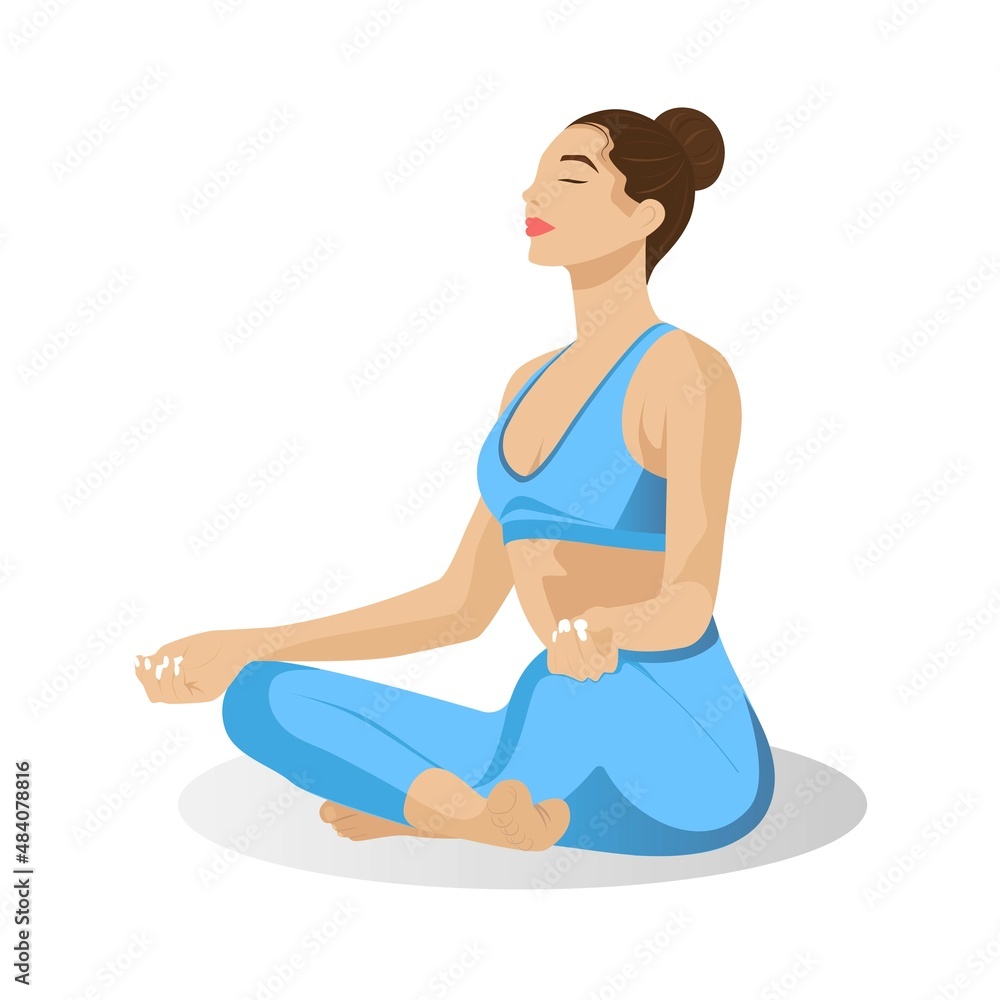Introduction: Top 8 Yoga Practices for People with Busy Lifestyles
In today’s fast-paced world, many people find it challenging to prioritize self-care and maintain a healthy lifestyle. However, incorporating yoga into your routine can be a game-changer. Yoga offers a holistic approach to wellness, combining physical postures, breathwork, and mindfulness practices. Even if you have a busy schedule, there are several yoga practices that can be easily integrated into your daily life.
Table of Contents
How Do Yoga Help People with Hectic Lifestyles?
Yoga is a powerful tool for managing hectic lifestyles as it offers a range of physical, mental, and emotional benefits. Physically, yoga helps relieve tension and tightness in the body, improves flexibility, increases strength, and enhances overall fitness.

Mentally, it promotes relaxation, reduces stress, and improves focus and mental clarity. Emotionally, yoga cultivates mindfulness, self-awareness, and a sense of inner peace. By practicing yoga regularly, individuals with hectic lifestyles can find balance, manage stress more effectively, and improve their overall well-being.
How Do You Fit Yoga into A Busy Schedule?
Fitting yoga into a busy schedule requires commitment and prioritization. Start by assessing your daily routine and identifying pockets of time that can be dedicated to yoga practice. It may mean waking up a bit earlier or finding short breaks during the day to squeeze in a few yoga poses.

Consider integrating yoga into your existing activities, such as practicing breathing exercises during your commute or incorporating stretches while watching TV. Additionally, utilizing online resources and attending shorter yoga classes can be helpful in optimizing the time available for practice.
Why Is Yoga Important in A Busy Life?
Yoga is essential in a busy life because it offers a holistic approach to well-being. It provides an opportunity to step away from the chaos, slow down, and reconnect with yourself. Yoga helps reduce stress, improve focus, increase energy levels, and enhance productivity.
It also promotes self-care, self-awareness, and self-compassion, which are vital for maintaining physical and mental health amidst a busy lifestyle. By incorporating yoga into your routine, you create a space for balance, relaxation, and self-nurturing, ultimately leading to a more fulfilling and sustainable lifestyle.
What Are the Mental Benefits of Yoga?
The mental benefits of yoga are numerous. Regular practice helps calm the mind, reduce anxiety and depression, and enhance overall mental well-being. Yoga encourages mindfulness, which allows individuals to be present in the moment and cultivate a non-judgmental awareness of their thoughts and emotions.

This awareness helps to reduce mental clutter, increase clarity, and promote a sense of inner peace. Moreover, yoga incorporates breathwork and relaxation techniques that activate the parasympathetic nervous system, triggering a relaxation response and reducing stress levels.
What Is the Best Timing for Yoga?
The best timing for yoga depends on personal preference and individual circumstances. Some people find that practicing yoga in the morning energizes them for the day ahead, while others prefer to practice in the evening to unwind and prepare for restful sleep.
It is generally recommended to avoid practicing immediately after heavy meals. Ultimately, the best timing for yoga is when you can commit to a regular practice and fully engage with the session. Consistency is more important than the specific time of day, so choose a time that works best for your schedule and allows you to be fully present during your practice.
How does Yoga work as A Lifestyle?
Yoga is not just an exercise routine; it can also be a way of life. Yoga as a lifestyle extends beyond the physical practice on the mat. It involves embodying the principles of yoga, such as compassion, mindfulness, self-discipline, and self-reflection, in all aspects of life.

Photo Courtesy: Adobe Stock
Practicing yoga as a lifestyle means integrating mindfulness into daily activities, making conscious choices that align with your values, nurturing positive relationships, and prioritizing self-care. It is an ongoing journey of self-discovery, self-improvement, and cultivating a balanced and fulfilling life.
What Is the Most Important Thing During Yoga?
The most important thing during yoga is honoring your body and listening to its needs. Yoga is not a competition or a performance; it is a practice of self-care and self-exploration. Pay attention to your breath, modify poses as necessary, and respect your body’s limitations. Avoid pushing yourself beyond your comfort zone or forcing yourself into positions that feel painful. Cultivate self-compassion, patience, and non-judgment during your practice. By prioritizing safety, mindfulness, and self-acceptance, you can create a positive and nourishing yoga experience for yourself.
In this blog, we will explore the top eight yoga practices for people with busy lifestyles, helping you find balance, reduce stress, and enhance overall well-being.
Sun Salutations (Surya Namaskar)
Sun Salutations are a series of flowing yoga postures that combine movement, breath, and mindfulness. This dynamic practice engages the entire body, improves flexibility, boosts circulation, and energizes the mind. A few rounds of Sun Salutations in the morning can be a great way to kickstart your day and set a positive tone.
Desk Yoga
If you spend long hours sitting at a desk, incorporating desk yoga can help alleviate tension, improve posture, and promote relaxation. Simple stretches, neck and shoulder rolls, seated twists, and wrist exercises can be done right at your workspace. Take short breaks throughout the day to stretch and rejuvenate your body and mind.
Breathing Exercises (Pranayama)
Breathing exercises are accessible and highly beneficial for reducing stress and enhancing mental clarity. Take a few minutes each day to practice deep belly breathing, alternate nostril breathing, or calming breaths like the 4-7-8 technique. These techniques can be done anywhere and anytime, providing a sense of calm and grounding amidst a busy schedule.
Mindful Walking
If you struggle to find time for a dedicated yoga practice, incorporate mindfulness into your daily walks. Slow down your pace, focus on your breath, and bring awareness to the sensations in your body. Engage all your senses, notice the environment around you, and allow walking to become a moving meditation. This practice can help clear the mind, increase mindfulness, and reduce stress.
Yoga Nidra (Yogic Sleep)
Yoga Nidra is a deeply relaxing practice that promotes physical, mental, and emotional restoration. Even a short 10-15 minute session can provide profound relaxation and rejuvenation. Lie down in a comfortable position, follow a guided Yoga Nidra meditation, and allow yourself to enter a state of deep relaxation. This practice can be done at any time of the day, whenever you need a break and mental recharge.
Mini Yoga Breaks
Incorporate mini yoga breaks throughout the day to release tension and reset your energy. It can be as simple as a few minutes of seated twists, forward folds, or gentle stretches. These short breaks help to increase blood circulation, relieve stiffness, and boost focus and productivity.
Evening Wind-Down
Create an evening wind-down routine to unwind from the day’s demands and prepare for restful sleep. Practice gentle yoga stretches, such as forward bends and restorative poses, to release any accumulated tension. Combine this with calming breathing exercises and a few minutes of meditation or reflection to let go of the day’s stress and find inner peace.
Yoga Classes/Online Resources
If time permits, consider attending yoga classes or accessing online resources that offer shorter yoga sessions designed for busy individuals. Look for classes specifically tailored to fit into tight schedules, such as express yoga classes or sessions focused on specific areas like stress relief or flexibility. Utilize online platforms that provide on-demand yoga classes, allowing you to practice yoga at your convenience.
FAQs on “Top Yoga Practices for People with Busy Lifestyles”
Q1: Can yoga really benefit people with busy lifestyles?
A1: Yes, yoga can be highly beneficial for individuals with busy lifestyles. It provides a range of physical, mental, and emotional benefits that can help manage stress, improve focus, increase energy levels, and promote overall well-being. Even short yoga sessions can have a positive impact, making it an accessible practice for busy individuals.
Q2: How long should each yoga session be for busy individuals?
A2: The duration of your yoga session can vary depending on your schedule and personal preferences. While longer sessions are beneficial, even a short practice of 10 to 20 minutes can make a difference. The key is consistency. Regularly incorporating yoga into your routine, even in shorter intervals, can yield positive results.
Q3: How often should I practice yoga if I have a busy lifestyle?
A3: Consistency is key when it comes to yoga practice. While it’s recommended to practice yoga several times a week, even a daily 10-minute session can be beneficial for busy individuals. Find a frequency that works for you and your schedule, whether it’s practicing every day or a few times a week.
Q4: Can I practice yoga at home with a busy schedule?
A4: Absolutely! Practicing yoga at home is a convenient option for those with busy schedules. You can find online yoga classes, follow instructional videos, or use yoga apps to guide your practice. Dedicate a specific area in your home for yoga and keep your mat and any necessary props nearby. This allows you to practice whenever you have a few spare moments.
Conclusion
Incorporating yoga into a busy lifestyle is not only possible but also essential for maintaining physical and mental well-being. By integrating these eight yoga practices into your routine, you can experience the transformative benefits of yoga, even with limited time. Remember, consistency is key, so start small and gradually build up your practice. With dedication and a mindful approach, you can find harmony, reduce stress, and cultivate a healthier, more balanced life.
Reference
- The Yoga Philosophy T. R. Tatya (Translator), with Bhojaraja commentary; Harvard University Archives, page 80
- Jan E. M. Houben and Karel Rijk van Kooij (1999), Violence Denied: Violence, Non-Violence and the Rationalization of Violence in South Asian Cultural History, Brill Academic, ISBN 978-9004113442, page 5
- N. Tummers (2009), Teaching Yoga for Life, ISBN 978-0736070164, page 13-16
- Y. Sawai (1987), “The Nature of Faith in the Śaṅkaran Vedānta Tradition”, Numen, Vol. 34, Fasc. 1 (Jun., 1987), pages 18-44
- Āgāśe, K. S. (1904). Pātañjalayogasūtrāṇi. Puṇe: Ānandāśrama. p. 102.
- Sharma and Sharma, Indian Political Thought, Atlantic Publishers, ISBN 978-8171566785, page 19
- N Tummers (2009), Teaching Yoga for Life, ISBN 978-0736070164, page 16-17
- Kaelber, W. O. (1976). “Tapas”, Birth, and Spiritual Rebirth in the Veda, History of Religions, 15(4), 343-386
